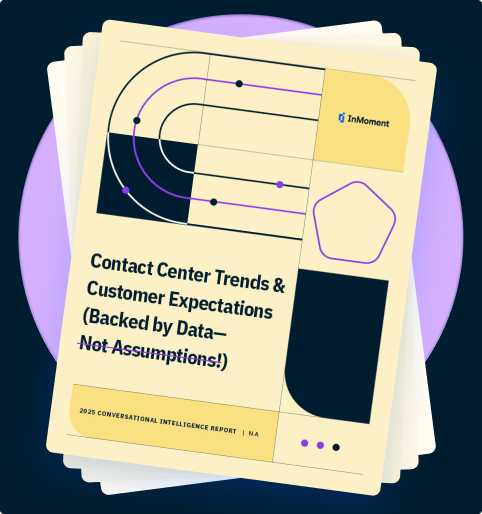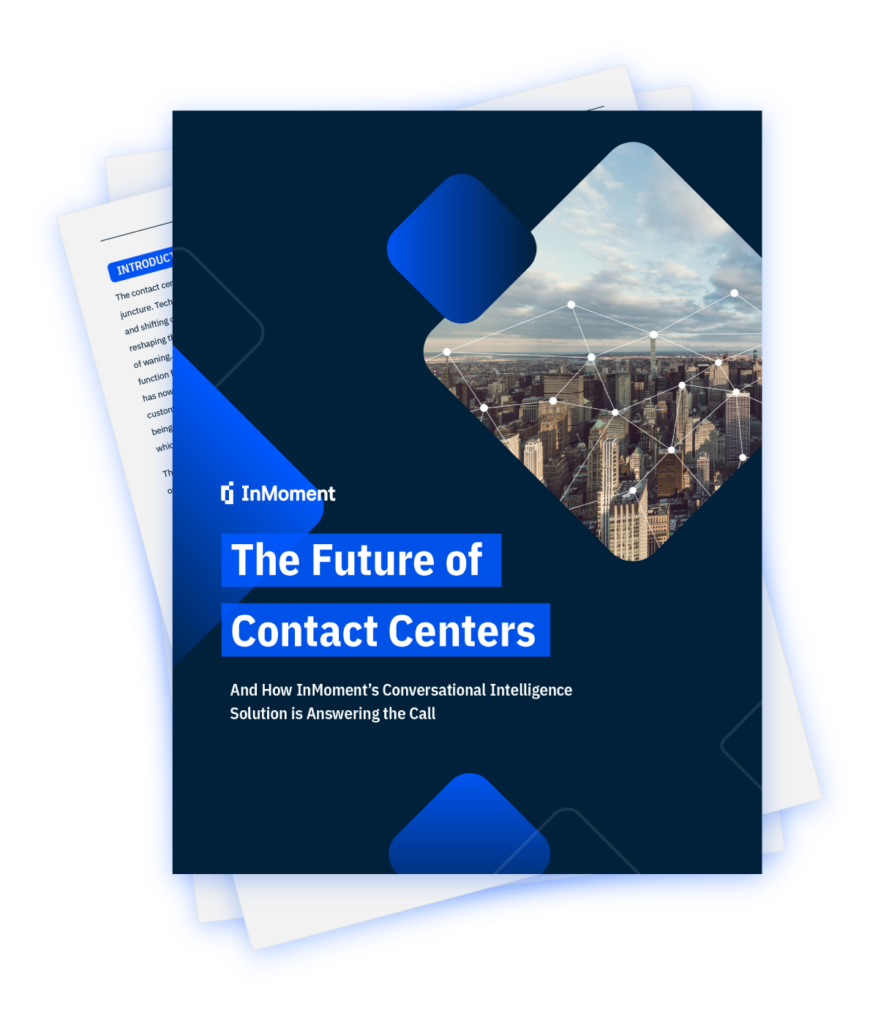Best Practices and Strategies to Master Call Center Management
Call center management involves planning, coordinating, and optimizing the technology and teams required in a call center. Effective call center management blends strategic oversight with advanced technology to deliver exceptional customer experiences.
In the fast-paced world of customer service, call center management is pivotal for organizations working to maintain efficient operations, improve customer satisfaction, and improve customer experience.
Understanding the ins and outs of call center management is crucial for seasoned professionals and newcomers to the field. When successful call center management is achieved, it can affect the entire organization, from a reduced number of customer complaints to increased revenue.
What Is Call Center Management?
At its core, call center management is the art of overseeing the day-to-day operations of a call center, ensuring that it runs smoothly and efficiently. Call centers serve as hubs for customer interactions, making them a vital customer support element.
The role of call center management extends beyond the daily operational aspects. It also encompasses strategic planning, workforce management, and technology integration. This multifaceted approach is essential for meeting today’s customers’ ever-evolving needs and expectations.
With the advent of omnichannel customer experience programs and increasing customer demands, effective call center management has become more challenging and pivotal than ever before. It requires a harmonious blend of leadership, technology, and a customer-centric mindset to succeed in this dynamic landscape.
How Do Call Centers Work?
Call centers are the central point for customer inquiries, issues, and support. They employ skilled agents who communicate with customers to address their concerns, answer questions, or provide assistance. Call centers bridge the gap between a business and its customers.
Successful call centers have evolved their operations with conversation analytics software, embracing a more comprehensive approach to customer engagement. Modern call centers not only handle inbound customer inquiries but also proactively reach out to customers through outbound communications.
These centers are equipped with advanced technologies, including customer relationship management (CRM) software, predictive dialers, and analytics tools. This technology allows them to provide a more personalized and efficient service. Whether it’s resolving issues, processing orders, conducting market research, or offering technical support, the modern call center is a versatile hub for customer interactions, adapting to the diverse needs of businesses and their clientele.
Benefits of Having Call Center Management
Effective call center management offers many advantages for businesses, propelling them towards enhanced customer satisfaction, operational efficiency, and, ultimately, improved profitability.
Enhanced Customer Experience
Implemented call center management can significantly enhance the overall customer experience. Well-managed call centers ensure that customers receive prompt, accurate, and helpful support, resulting in higher levels of customer satisfaction. This boost in customer satisfaction, in turn, can lead to increased customer loyalty and long-term relationships.
Increased Operational Efficiency
By efficiently handling a high volume of customer inquiries, well-managed call centers minimize customer wait times and ensure that issues are resolved swiftly. This not only improves customer satisfaction but also optimizes the utilization of resources and reduces operational costs, leading to significant cost savings for the organization.
Improved Data-Driven Insights
Call center management also provides invaluable data-driven insights. By collecting and analyzing customer data, businesses gain a better understanding of customer needs, preferences, and pain points. This data, in turn, informs strategic decisions, helping businesses refine their products, services, and customer support processes.
Call Center Management Best Practices
Creating and maintaining an effective call center can be a difficult task. But, with the right tools and procedures in place, you can build a call center that contributes to the success of your business. Here are some of the best call center management practices to follow to ensure your team stays on the right track:
- Set Clear Objectives
- Hire the Right Team
- Train & Coach Agents
- Implement Self-Service Functionality
- Automate Mundane Tasks
- Focus on First Contact Resolution
- Leverage Call Center Scripts
- Use Prediitve Analytics
- Prioritize Omnichannel Communication
- Implement A Call Center Dashboard
- Invest in Leadership Development
- Develop A Crisis Management Plan
- Create A Knowledge Base
- Maintain Compliance
- Promote A Healthy Work-Life Balance
- Utilize QA Scores to Monitor Performance
- Recognize Employees
- Optimize Scheduling
- Gather Customer Feedback
- Monitor Metrics Over Time
1. Set Clear Objectives
Before you develop training programs, offer incentives to employees, or purchase a contact center platform to improve your operations, you need to have a clear vision of what you want out of your contact center.
Take the time to define goals for your contact center, such as improving overall customer satisfaction or identifying the most frequent customer complaints so that other teams can fix those problems.
2. Hire the Right Team
You need the best employees handling customer inquiries to set your contact center up for success. As part of your contact center management process, recruit employees with the right skills and experience, such as strong communication skills, empathy, problem-solving skills, and past experience working in customer service.
3. Train & Coach Agents
Your agents are the lifeblood of your contact center and should be treated as such. Implement agent performance metrics and programs that help your agents perform their best.
When sufficiently trained, agents are prepared to deal with a wide range of customer inquiries.
InMoment’s contact center solution gives managers the power to create action plans for employees based on smart recommendations from past interactions. With these customized action plans, managers can effectively improve employees’ performance.
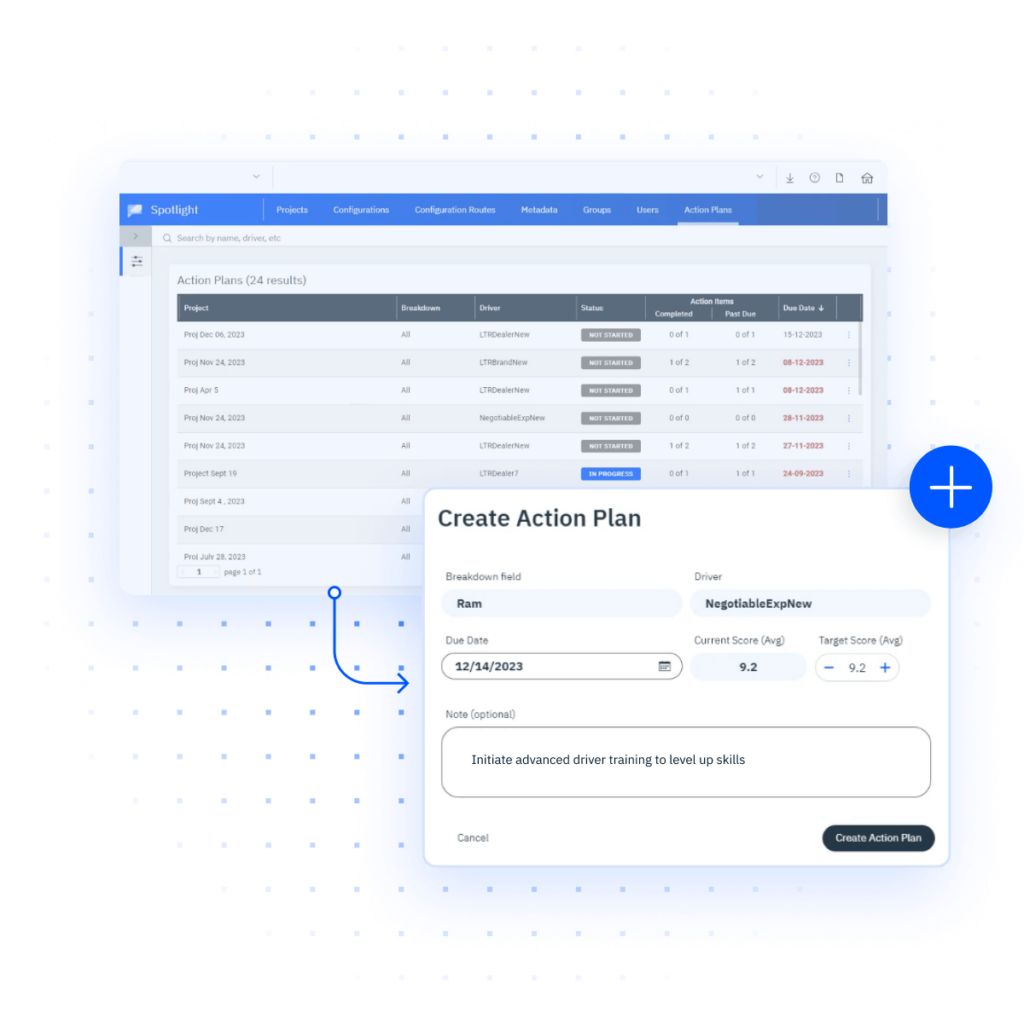
4. Implement Self-Service Functionality
Did you know that over a quarter of all consumers will give up solving a problem if they can’t find the answer themselves? In order to retain these customers, your call center must have self-service options.
Self-service options such as chatbots, IVRs, and online FAQs help reduce the workload of your call center employees while also improving the overall customer experience.
5. Automate Mundane Tasks
In another effort to ensure your agents are being as efficient as possible, make it a priority to automate repetitive tasks. Tasks such as data entry or follow-up communications can be easily automated using the right technology. By automating these tasks, your agents spend more time on the highest-priority customer inquiries.
InMoment’s contact center automation platform leverages generative AI to provide quick, on-brand responses to customers. When your agents can respond to customer inquiries within 24-48 hours, your business can realize a boost in retention of over 8%.
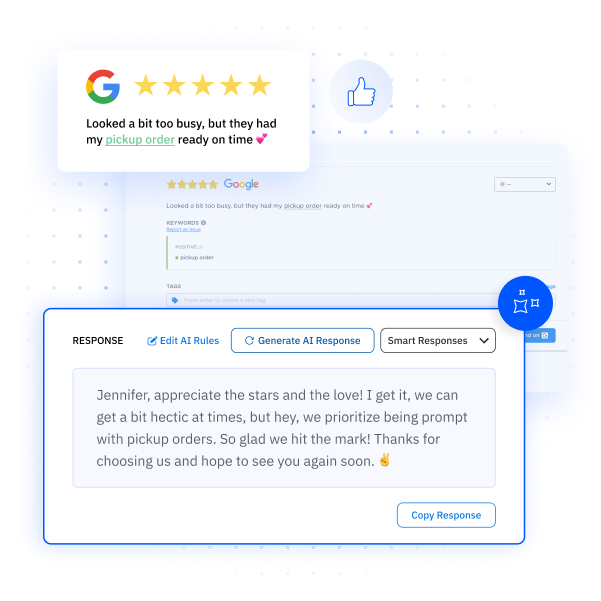
6. Focus on First Contact Resolution
First contact resolution is a great way to measure the effectiveness of your call center. When your agents are able to solve inquiries on the first call, it reduces repeat call rate and customer churn.
7. Leverage Call Center Scripts
A good call center script can create consistency in the customer experience. Consider making a standardized script that agents can use in your call center. This ensures that customer interactions stay on track and that they head to a swift resolution.
8. Use Predictive Analytics
Incorporate predictive analytics to anticipate customer needs, forecast call volumes, and optimize resource allocation.
InMoment’s predictive customer analytics solution helps you analyze current conversational data to understand complex data and give you insights to improve future performance.
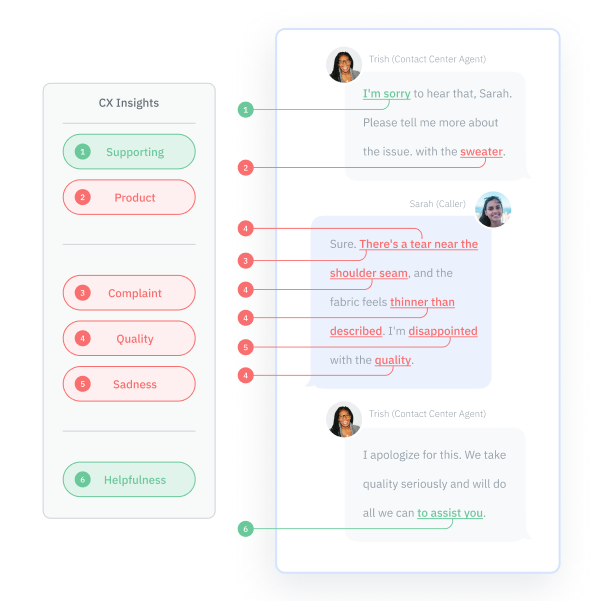
9. Prioritize Omnichannel Communication
The majority of consumers want to be able to have consistent interactions with customer service teams, regardless of the channels those interactions start and end on. In order to do this, it is important that your call center can operate as an omnichannel contact center that supports interactions from channels such as call, web chat, email, SMS, etc.
With InMoment’s omnichannel contact center software, you can house all your customer data in one place, allowing your agents to quickly come up to speed on customer interactions.
10. Implement A Call Center Dashboard
A call center dashboard provides real-time insights into the performance of employees and the call center as a whole. They can be customized to meet your specific needs in order to help you make the most informed decisions regarding call center operations.
11. Invest in Leadership Development
Train call center supervisors and customer experience managers in leadership skills to ensure that they can effectively support the teams under them. Strong leadership fosters a positive work environment, improves employee morale, and improves service delivery.
12. Develop a Crisis Management Plan
During unexpected events, your call center may receive a large volume of specific calls. To successfully handle these situations, it is important to have a contingency plan in place that helps maintain service continuity.
These plans include disaster recovery challenges, communication protocols, and other solutions to adapt to different challenges.
13. Create A Knowledge Base
Develop a centralized knowledge base for agents and customers that includes FAQs, troubleshooting guides, and other information that can reduce call handling times and call volume, as well as give agents the most up-to-date information for handling customer inquiries.
14. Maintain Compliance
Stay up-to-date with industry regulations and ensure that your call center management practices are compliant with current legal and ethical standards. This includes adherence to data privacy laws, industry certifications, and fair labor standards.
15. Promote A Healthy Work-Life Balance
It is no secret that call center employees have a high turnover rate. By promoting a healthy work-life balance, you can prevent burnout among your employees. You can promote a healthy work-life balance by providing flexible scheduling, wellness programs, and training other management staff to be supportive.
16. Utilize QA Scores to Monitor Performance
Regularly assess agent performance through quality assurance (QA) scores. Use this data to identify strengths and areas for improvement, provide targeted coaching, and maintain high service standards.
17. Recognize Employees
Acknowledging and rewarding employees for their hard work boosts morale and motivation. Celebrate individual and team achievements through incentives, public recognition, or personalized thank-you notes. Regular recognition fosters a culture of appreciation, increasing employee satisfaction and retention.
18. Optimize Scheduling
Workforce management tools can help you create efficient schedules that align staffing levels with call volumes to minimize understaffing or overstaffing. For example, a retail call center will want to have more employees working during the holiday season to keep up with the increased number of customer service requests.
19. Continuously Gather Customer Feedback
The goal of most call centers is to resolve customer complaints. That being said, collecting customer feedback can show your commitment to improving the customer experience and help you proactively solve future customer complaints.
Consider asking customers to rate their experience after each call. You can collect more in-depth feedback during quarterly or annual customer feedback questionnaires to help you make the necessary changes to improve call center performance.
20. Monitor Main Metrics Over Time
For successful call center management, you will need to continuously monitor and track the performance of your main metrics over time.
Organizational Structure of a Call Center
The organizational structure of a call center is a critical component that ensures efficient operations and a seamless customer experience. It typically comprises several key roles and layers of management to function effectively, including:
- Managers
- Supervisors and team leaders
- Agents
- Support staff
What Is a Call Center Manager?
At the top of the hierarchy, you’ll find the call center manager. This individual oversees the entire call center operations, sets strategic objectives, and makes crucial decisions. They are pivotal in aligning the call center’s goals with the broader organizational objectives. The call center manager’s leadership is essential in maintaining a high level of service quality and ensuring that the team meets performance targets.
Supervisors and Team Leaders
Reporting to the call center manager, there are often several supervisors or team leaders. These roles involve more direct oversight of agents and day-to-day operations. Supervisors provide guidance, monitor agent performance, and act as a bridge between the front-line agents and upper management. They play a vital role in maintaining order, supporting agents, and ensuring that the call center meets its targets.
Call Center Agents
The backbone of any call center is its agents. These individuals directly engage with customers, addressing their inquiries, resolving issues, and delivering the quality of service that the organization strives for. Agents are typically divided into teams or departments, each specializing in a particular area of customer support.
Support Staff
In addition to the core roles mentioned above, call centers may also have support staff responsible for tasks like quality assurance, training and development, data analysis, and IT support. These support functions are integral to the call center’s overall effectiveness. Quality assurance ensures that customer interactions meet the desired standards, training and development keeps agents updated and skilled, data analysts gather valuable insights, and IT support maintains the technology infrastructure.
The organizational structure of a call center is designed to create a clear chain of command, establish accountability, and ensure that each component of the operation contributes to the overall success of the center. Effective communication and coordination among these roles are essential for providing exceptional customer service while meeting performance objectives and maintaining a positive work environment for all involved.
How to Successfully Manage a Call Center
Managing a call center operation that consistently delivers exceptional service and meets its objectives is no small feat. It requires a combination of strategic planning, effective management, technology integration, and a dedicated focus on continuous improvement. These effective call center management strategies ensure that your contact center can realize continuous success:
Clear Objectives and Strategy
Success begins with setting clear objectives for your call center. Whether it’s achieving a specific customer satisfaction rating, reducing response times, or increasing first-call resolution rates, having well-defined goals is essential.
These objectives should align with your organization’s broader business objectives and customer expectations. A well-thought-out strategy, supported by a comprehensive business plan, will guide your call center toward achieving these objectives.
Technology Integration
Embrace technology to enhance your call center’s efficiency and customer experience. Implement advanced call center technologies, such as customer relationship management systems, automated call routing, and workforce management software. These tools streamline processes, reduce errors, and provide agents with the information they need to serve customers effectively.
Integrating multi-channel support capabilities, including phone, email, live chat, and social media, is crucial in today’s omnichannel customer service landscape. The right technology empowers your agents to deliver timely and accurate support while also providing valuable data for performance monitoring and decision-making.
Data Analysis and Continuous Improvement
Analyzing customer data is a cornerstone of call center success. Regularly review key performance metrics, such as average response time, first-call resolution, and customer satisfaction ratings. This data provides insights into your operation’s effectiveness and helps identify areas that require improvement. Implement a continuous improvement culture by gathering customer and staff feedback and using these insights to refine your processes. This iterative approach ensures that your call center stays aligned with changing customer needs and market dynamics, fostering long-term success.
In summary, running a call center successfully requires a combination of well-defined objectives, technology integration, and a commitment to continuous improvement. By focusing on these key aspects, your call center can provide outstanding customer service, optimize its operations, and adapt to the ever-evolving demands of the modern customer service landscape.
Key Success Metrics for Effective Call Center Management
To measure and improve the performance of your call center operations, it’s important to identify, align on, and track the most important call center metrics associated with the outcomes you’re looking to achieve—for your customers, your agents, your call center, and the business as a whole.
A comprehensive call center management program should incorporate every measurable element of the call center experience—both from the agent’s perspective and the customer’s—but an effective program will highlight the key drivers of the experience and prioritize improvement efforts where they’ll have the most impact.
InMoment key driver analysis can help your business understand what is having the greatest impact on your contact center and customer experience and give you the insights to make informed business improvements.
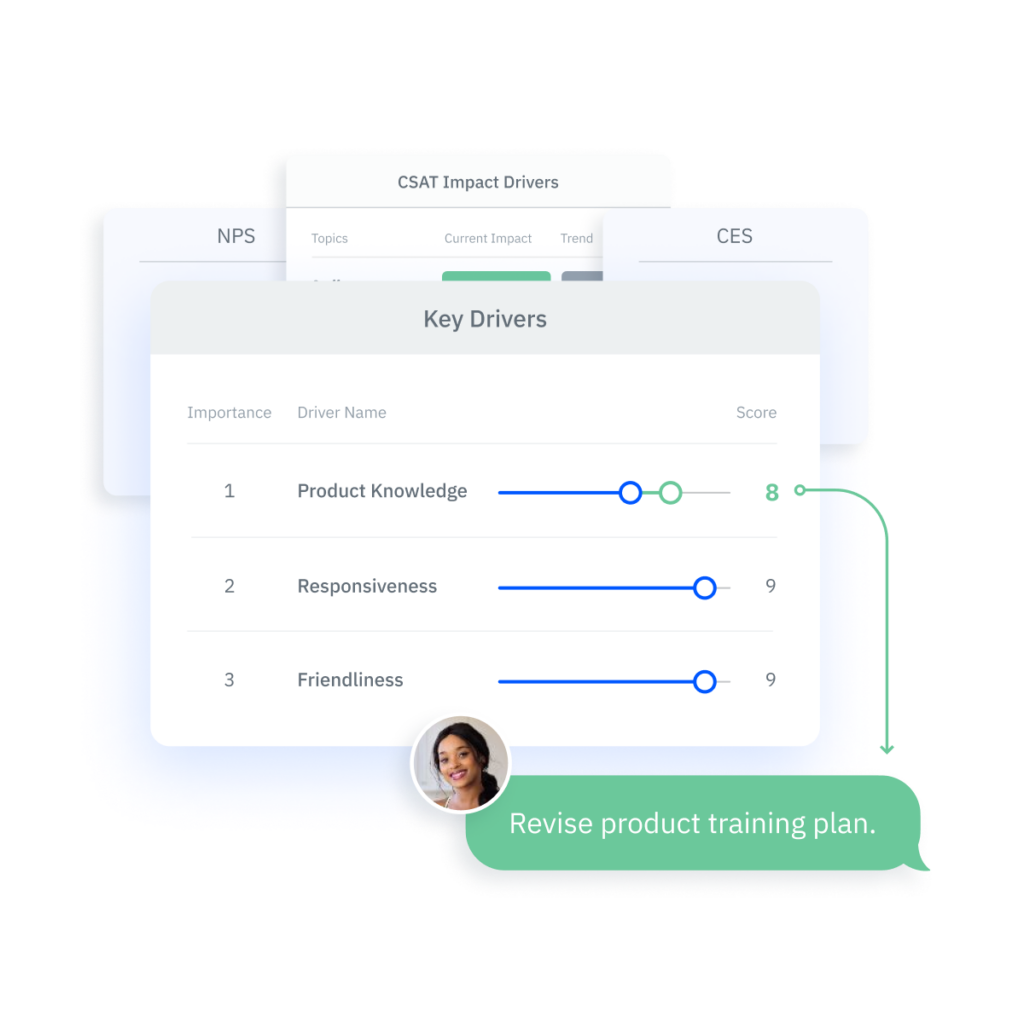
To make sure those key drivers point you in the right direction, there are three primary sources you should look to for capturing insights on an ongoing basis:
- Operational data: in most cases, this can be extracted from the systems and technologies used to handle calls
- Customer experience data: captured via post-call surveys and unstructured datasets (call transcripts, chats, email threads, etc.)
- Agent experience data: captured by surveying agents and used to ensure teams are trained and equipped to excel in their roles
Operational Metrics for Call Centers
Some metrics are inherently embedded within call center operations—things like Call Availability, Average Hold Time, First Contact Resolution, and others. Because these sorts of operational metrics are universal to all call centers, an effective call center management program provides benchmarking analyses to:
- Put performance in perspective by comparing it against industry standards
- Identify areas where you’re falling short of customer expectations
- Prioritize improvement strategies according to potential impact
Customer Experience Metrics for Call Centers
To add further context and ensure the call center experience measures up to your standards, it’s important to go a click deeper. Many call centers leverage post-call customer satisfaction surveys to surface insights related to service standards by going straight to the source and asking customers about the following:
- Details of the experience: What type of issue they were calling with, how it was handled, and whether it was resolved
- Perceptions of the experience: Agent Knowledge, Problem Solving Ability, Courtesy/Professionalism, Ease of Interaction, etc.
- Satisfaction with the experience: Typically asked in the form of a CSAT (Customer Satisfaction), NPS (Net Promoter Score), or CES (Customer Effort Score) depending on which North Star customer experience metrics the company uses across other feedback channels
To surface insights beyond the questions they think to ask, brands capture qualitative feedback in the form of open-ended questions. Advanced call center management programs take this unstructured feedback to a new level by leveraging advanced technologies like Conversational Intelligence, which apply natural language processing (NLP), machine learning, and artificial intelligence to gain insights from recorded or written conversations.
Agent-Specific Metrics for Call Centers
As you can see in the operational and customer experience metrics used thus far, effective call center management aims to understand how easy it is for customers to interact with a business and where to focus improvement strategies. Agents are the ones tasked with facilitating those interactions, so it’s mission-critical to ask them about their experiences and whether they’re adequately trained and equipped to succeed.
Agent Effort Score (AES) is a unique metric that provides insight into agent performance from their perspective. It measures how easy it is for agents to address and resolve callers’ issues. A low score indicates obstacles or sub-optimal structures that make it difficult for agents to achieve their goals.
You can measure AES by surveying agents on how much effort they have to put into customer interactions. The feedback will highlight the issues preventing agents from being their most productive selves. For example, they might not have easy access to customer data, making it difficult to resolve issues quickly.
Determining the Right Metrics for Your Call Center Management Program
Ultimately, the metrics you use to track performance will be used to prioritize improvements and celebrate successes, so you want to focus on measuring and monitoring what truly matters. While there are many call center metrics to choose from, the main objective is to capture insights on what matters for your brand specifically.
Whether the company is focused on NPS, CSAT, or CES in your post-transaction surveys, make sure that’s reflected in your call center management program as well. Aligning on as many metrics as possible across the business will make it easier to gain organizational buy-in, socialize insights, and celebrate wins.
From Buy-In to All-In: Linking Call Center Metrics to Financial Outcomes
While improving operational performance, customer satisfaction, and agent retention will undoubtedly generate some enthusiasm around your call center management program, that buzz and level of commitment won’t be sustainable if it doesn’t translate to bottom-line impact. A truly effective program drives financial outcomes by reducing costs, curbing customer churn, and ironing out wrinkles identified by customers throughout their purchase journeys.
Use the interactive ROI calculator below to determine what success could look like for your brand using InMoment’s conversational intelligence tools.
Why Call Center Management is Critical for Business Success
The role of call center management cannot be overstated when it comes to ensuring business success. From providing a seamless and satisfying customer experience to optimizing operational efficiency, the benefits of effective management are undeniable. The call center serves as the frontline of customer support, bridging the gap between businesses and their valued customers. By implementing best practices, investing in technology, and nurturing a culture of continuous improvement, businesses not only meet the ever-evolving demands of their customer base but also gain a competitive edge in the market.
To learn more about how InMoment’s conversation intelligence capabilities can take your call center to the next level, schedule a personalized demo today!
References
Gartner. Top Priorities for Customer Service Leaders in 2024. (https://emt.gartnerweb.com/ngw/globalassets/en/sales-service/documents/trends/customer_service_support_2024_top_priorities.pdf). Accessed 1/2/2025.


